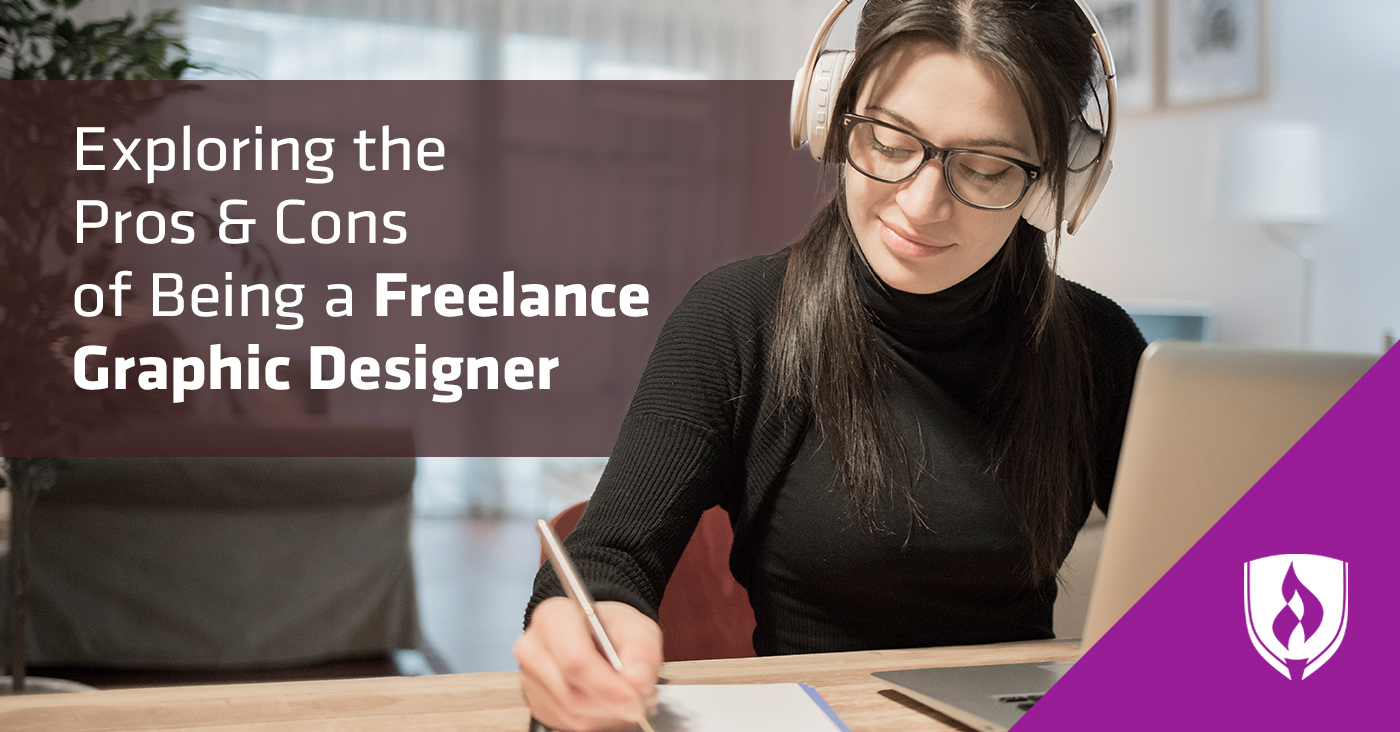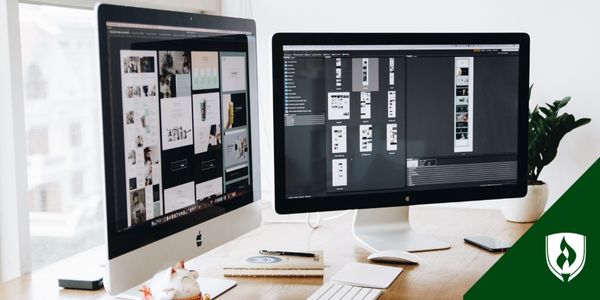
Graphic design offers an appealing combination of creativity and opportunity for those who choose to pursue it. The profession sits at the intersection of art and commerce and is a highly practical way for creative people to earn a living. Businesses and organizations of all shapes and sizes regularly turn to graphic designers to produce quality work, and often through the use of contract workers and freelance designers.
Freelancing can be an appealing way for designers to pay the bills, but like with any employment situation there’s good and bad than can come with it. If you’re curious about some of the potential pros and cons of being a freelance graphic designer, you’ve come to the right place. We’ve identified some of the most common pitfalls and positives you can expect to encounter as a freelance graphic designer.
5 Drawbacks to working as a freelance graphic designer
Freelancing is not for the faint of heart—so let’s set aside the positives for now and start with what you might not enjoy about this work arrangement.
1. You are your own marketing/billing/HR department
Freelance graphic designers are forced to wear many hats—and they might not always be a great fit! As a freelance worker, you’re on your own when it comes to handling the non-design work that would typically be divided between trained specialists. While that doesn’t mean you’ll need the same training as a CPA or lawyer to function, you may need to stretch beyond your comfort zone or seek out assistance.
Do your research and determine the must-haves for getting started—things like contract templates, a portfolio website, tax planning and more can get pretty complicated if you’re not prepared.
2. You might be working way more than a 9 to 5
It can be great to work outside of the schedule of a conventional work week. However, as a freelancer, you may find your work requires far more than the typical 40 hours a week you would be clocking within a company. Particularly early on in your career, be prepared to put in more work time than you might in a conventional workplace. Building a client base takes hard work, reliability, and open lines of communication no matter your other obligations.
3. You are responsible for ALL client expectations
As a freelancer, the buck stops with you. In a traditional workplace, you may have a manager or art director who can help shoulder the load of client expectations. When you are working freelance, you alone are responsible for managing client needs, providing rationale for design decisions and navigating any of the challenging (or even unreasonable) requests a client may have. While frustrating client feedback is a fact of life for creative professionals, having a support network of coworkers helps.
Finding ways to work with mentors during your freelance career can help provide additional support and tactics for handling tricky clients. These mentors can sometimes be found through professional organizations, alumni networks, or former teachers.
4. There’s feast and there is famine
Working freelance means there will be times when you have a lot of money coming in, and times when all your projects seem to dry up. Depending on the health of the economy and global events, you may find yourself riding a not-so-fun rollercoaster of business ups and downs.
Even well-established freelancers will run into slow periods. While you cannot control the ebb and flow of demand for your services, you can control your planning. Building a rainy day fund during the good times and having a backup plan for steady work will be key for dealing with the inevitable periods of scarcity you’ll find as a freelancer.
5. No built in professional network
It turns out that weekly happy hour was more than just a chance to play darts with your buddy in the next cubicle. The traditional workplace builds in a professional network that facilitates mentorship and supportive professional relationships. As a freelancer, it is an important part of your job to seek out and cultivate these relationships—something that can be much more difficult without the regular interactions you’d find in a non-freelance setting.
5 Advantages of working as a freelance graphic designer
With all the challenges of working as a freelance graphic designer, why is it such a popular option? Here are five factors that can help balance it out.
1. You set your own schedule
Maybe you are a caretaker to a family member who relies on you during the typical workday. Maybe you have young children who aren’t old enough to spend a full day at school or daycare. Whatever the unique demands on your time, a freelance career can help you set up a schedule specifically for whatever else impacts your life.
While keeping somewhat standard work hours is still a good idea, it’s certainly nice knowing you’re not tied to the daily routine of waking up early, fighting traffic and pushing through a full day if you’re not feeling up for it.
2. You determine the value of your work
If you’ve ever logged a long day of work for a paycheck that didn’t seem on par with the effort you put in, this is something you can appreciate. As a freelance graphic designer, you have the opportunity to literally name your price for every project you take on. This can be particularly appealing for well-established designers with a steady stream of demand for their work as they have more leverage to turn down offers where they feel the compensation doesn’t match the level of effort required.
You have the power to negotiate your worth every time you take on a new client as a freelancer. In a salaried full-time graphic design role, you’re more-or-less locked in and the work will keep coming—there’s no, “Thanks, but no thanks” option to walk away without resigning.
3. The world is your office
Office space is rapidly evolving concept. From the environmental advantages of working from home or a nearby workspace, to the sudden and unexpected circumstances that necessitate a home office, freelance is ideal for a contemporary, flexible workplace.
As long as you have a solid internet connection and good place to park yourself for focused, uninterrupted work time you can kiss the cubicle farm goodbye. Saving on the time and stress of a commute alone can make this factor worth considering.
4. You develop additional skillsets
The same challenges that force you to double as a business administrator or a sales expert do have a silver lining—the “stretch” that comes with these duties provides you with an opportunity to develop professionally. Having a broader foundation of non-technical design skills can certainly be an asset as you progress throughout your career. As a freelancer you’ll manage your personal budget, keep projects on track by logical prioritization and learn to communicate in a polished, professional manner—all of which can be a boost no matter where your career takes you.
5. You pick who you work with
Early on in your career as a graphic designer, you may not have the ability to be picky about your clients. But as you develop a stable freelance career, you get to choose who you work with.
In a large organization you take on whatever projects are assigned to you. In a freelance setting, you have the opportunity to work with clients you believe in. If all goes well, you may be able to make connections within a specific niche you care strongly about—which could allow you to develop a unique brand as an independent graphic designer.
Interested in learning more about graphic design?
Is freelancing worth it? The pros and cons of working as a freelance graphic designer need to be evaluated through the lens of your own experience to make that judgment. No matter what you decide, there’s more to graphic design than freelancing. Learn more about the role with our article, “What I Wish someone Told me BEFORE Becoming a Graphic Designer.” Also check out graphic design trends to avoid.
Related Articles:




